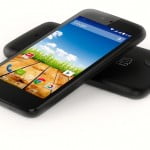
If you think the Internet’s busy now, just wait until next year. Gartner estimates there will be 6.4 billion connected devices in 2016, up 30 percent from this year.
That means people will be adding 5.5 million new objects to the Internet of Things every day. Consumer devices will proliferate most, while the ones for enterprises bring in more money, Gartner said in its annual IoT report released Tuesday.
Companies will shell out US$868 billion for IoT hardware next year, while consumers will spend $546 billion. Spending will rise for both, but the consumer shopping spree is picking up speed faster than enterprise buying. By 2020, consumers will edge out businesses, spending more than $1.5 trillion annually on IoT.
That figure includes the full hardware cost of cars, which are expected to become some of the most important connected objects in consumers’ lives. Other popular consumer IoT products include smart TVs, set-top boxes and home security devices like cameras and motion detectors. Toys are also entering the connected world now, analyst Peter Middleton said.
In the enterprise world, most companies using IoT up to now have adopted it for jobs specific to their industries, like package tracking in the shipping business and medical equipment in health care. But over the next few years, more enterprises will plug in things that fit into any type of business, like sensors and controls for lighting, heating, and air conditioning.
After buying IoT devices, users often need to keep spending on services. In fact, that’s where the value really comes from, Gartner says. Enterprises and consumers together will spend $235 billion on services in 2016, up 22 percent from this year. The biggest part of that today is professional services, including the cost of hiring companies to design, install and operate IoT systems. But spending on Internet connectivity and on services for consumer devices are growing faster.
There’s pressure on vendors to settle on standards so their products can work together with less user effort, but don’t look for one big peace agreement to suddenly make IoT more popular. Aside from basic connectivity standards like Wi-Fi and Bluetooth, diversity will continue to reign, and specifications for things like networking and security will keep evolving, Middleton said. That won’t stop consumers and businesses from continually adopting more devices.
“Because of the diversity, no single standard will be able to accelerate adoption across the board,” Middleton said.
[“source -pcworld”]










